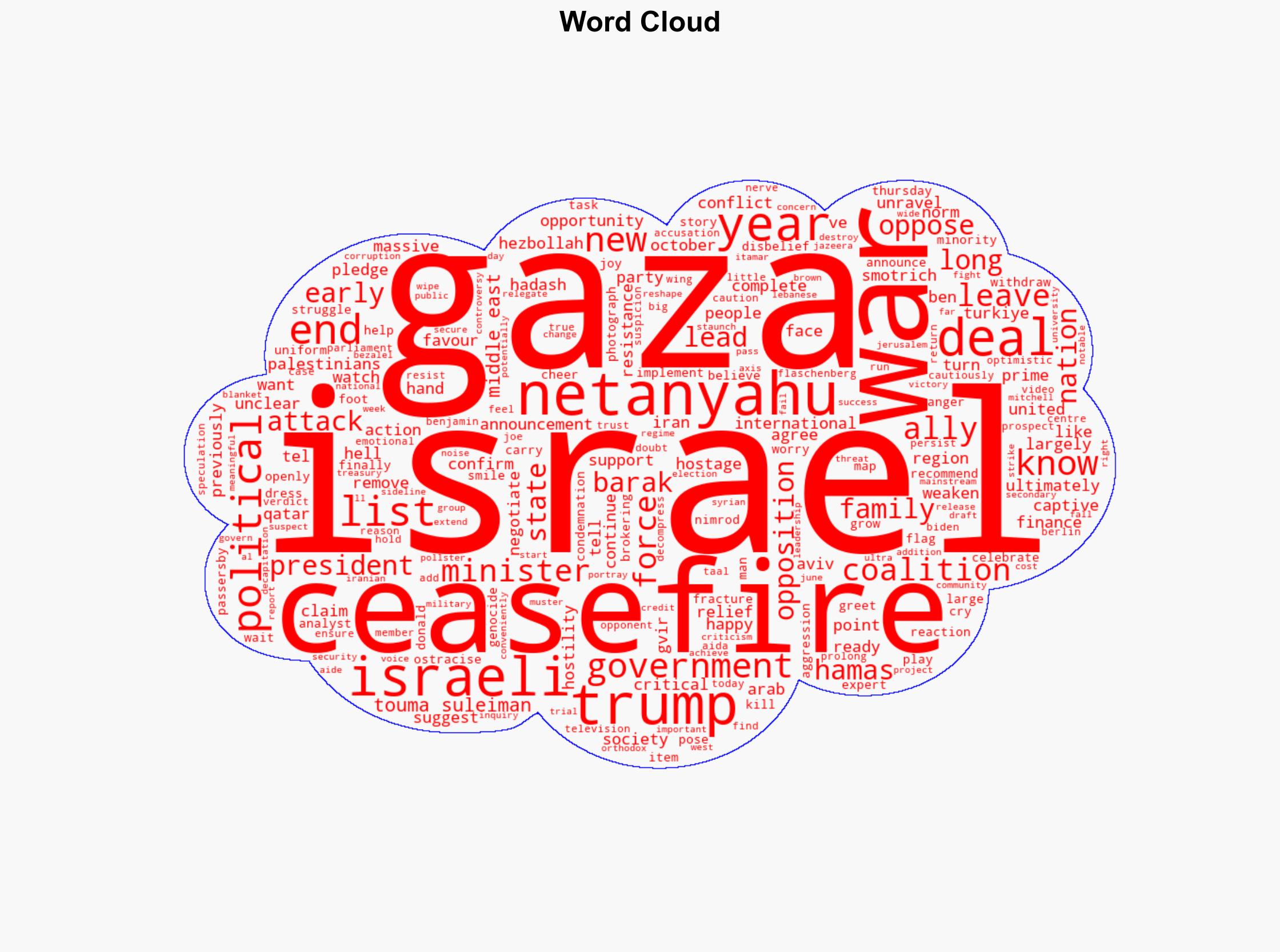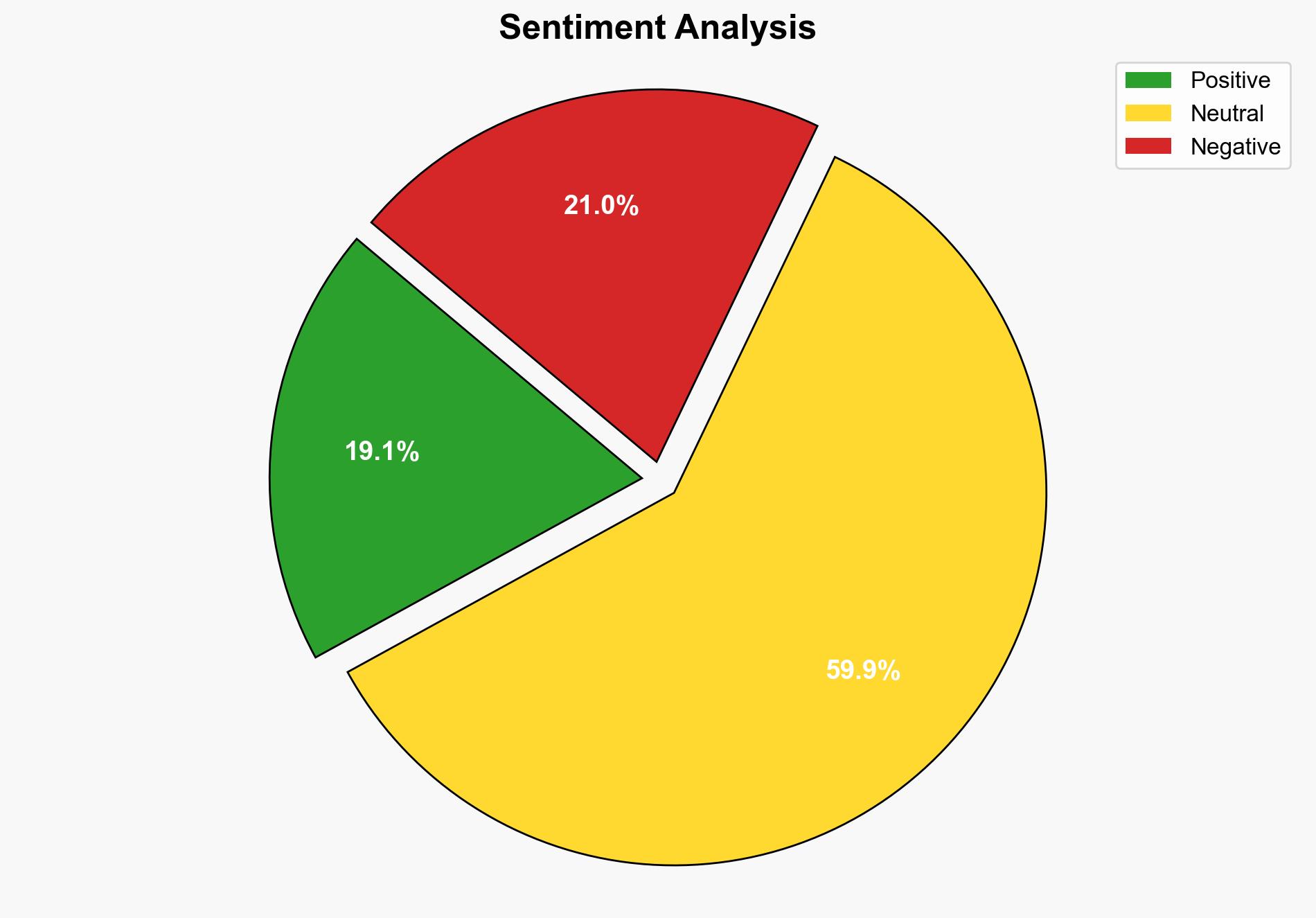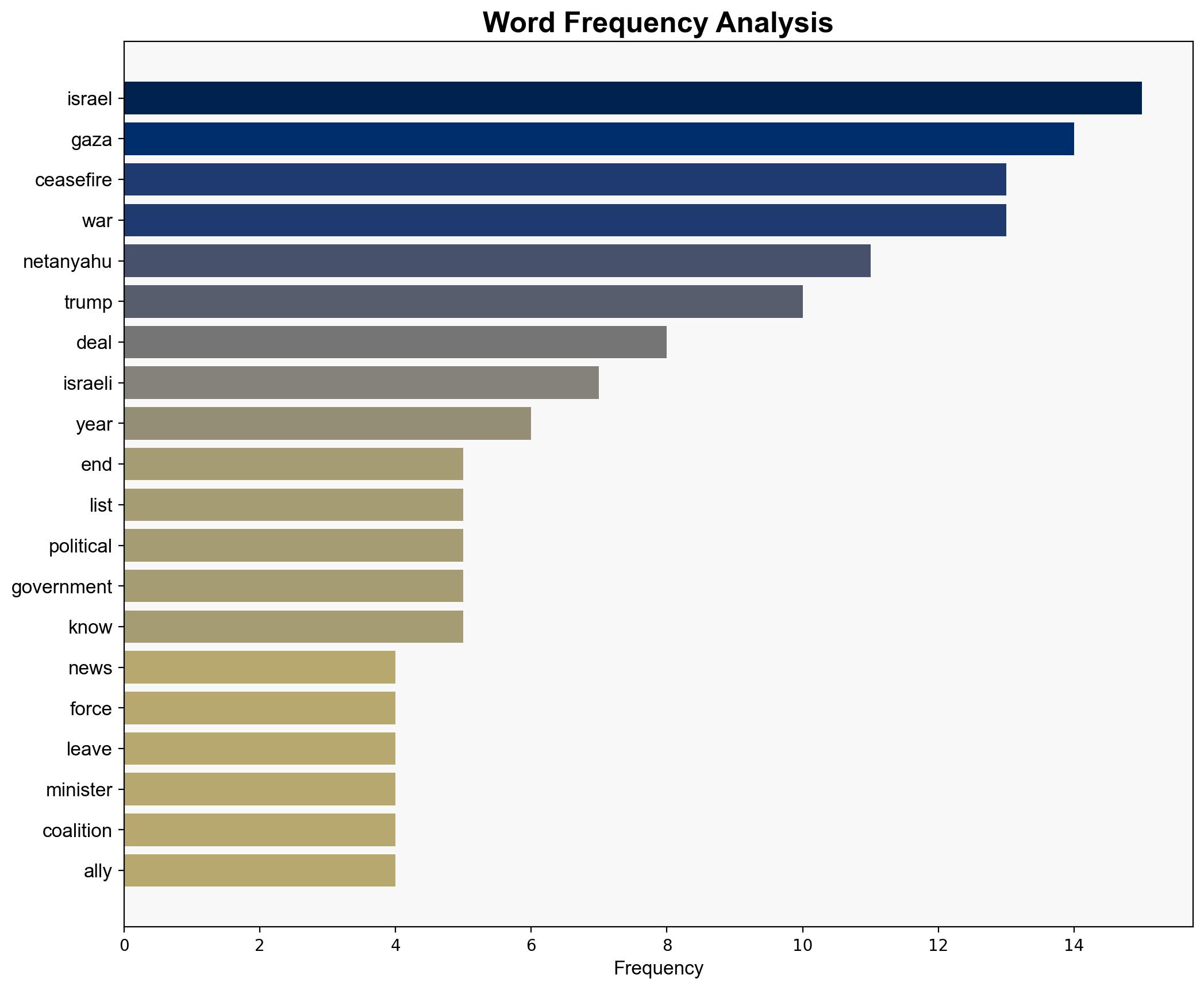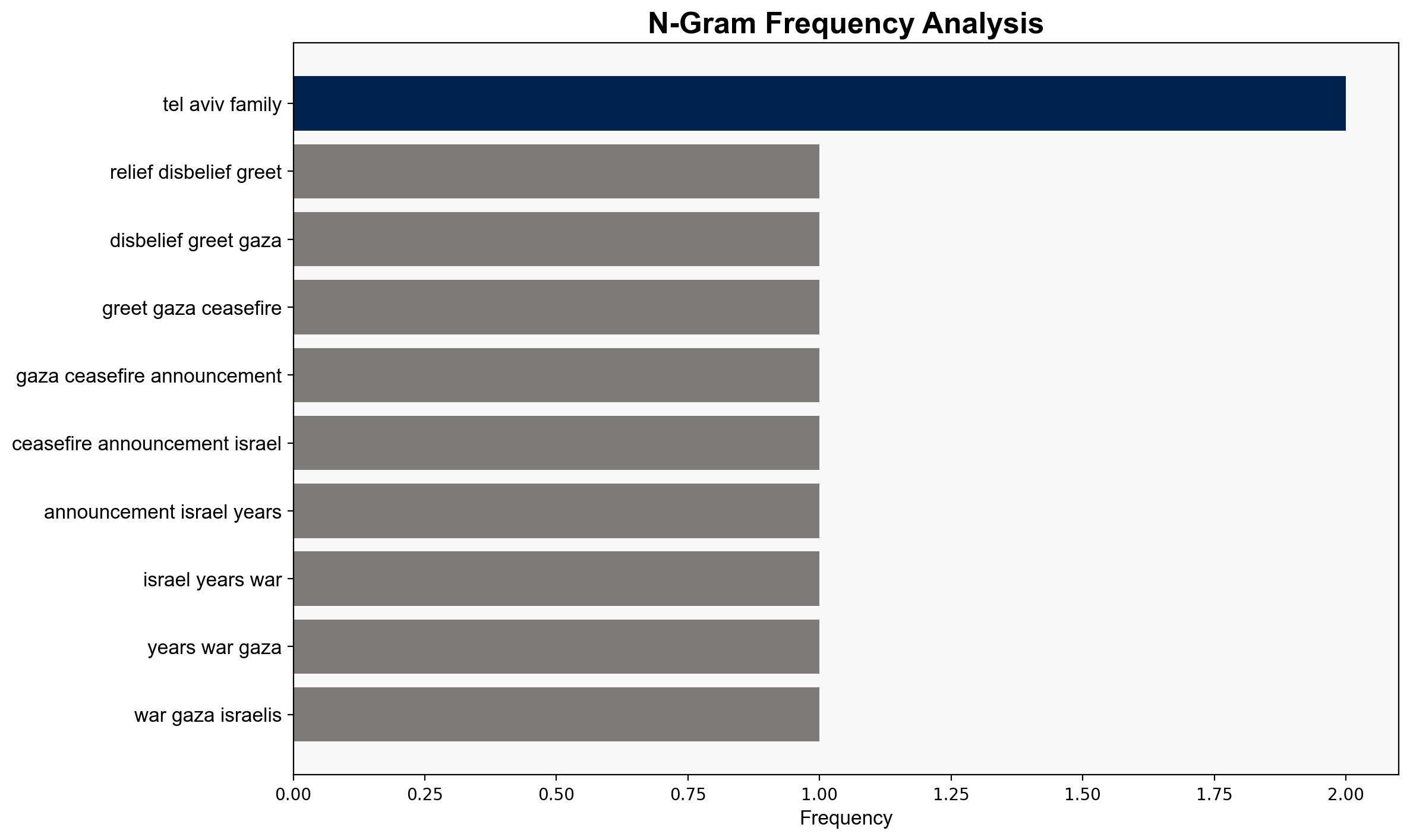Relief and disbelief greet ceasefire announcement in Israel – Al Jazeera English
Published on: 2025-10-09
Intelligence Report: Relief and disbelief greet ceasefire announcement in Israel – Al Jazeera English
1. BLUF (Bottom Line Up Front)
The announcement of a ceasefire between Israel and Gaza has been met with mixed reactions, ranging from relief to skepticism. The most supported hypothesis is that the ceasefire is a strategic move by Israeli leadership to consolidate political power and address international criticism. Confidence in this assessment is moderate due to ongoing political dynamics and potential for renewed conflict. Recommended action includes monitoring political developments within Israel and regional responses to the ceasefire.
2. Competing Hypotheses
1. **Hypothesis A**: The ceasefire is a genuine effort to end hostilities and stabilize the region, driven by international pressure and humanitarian concerns.
2. **Hypothesis B**: The ceasefire is a tactical maneuver by Israeli leadership, particularly Prime Minister Netanyahu, to alleviate domestic political pressure and manage international criticism while maintaining strategic military objectives.
Using the Analysis of Competing Hypotheses (ACH) method, Hypothesis B is better supported. The source text highlights Netanyahu’s political challenges, including a corruption trial and coalition stability, suggesting the ceasefire may serve as a political tool rather than a purely humanitarian gesture.
3. Key Assumptions and Red Flags
– **Assumptions**: Hypothesis A assumes that all parties are committed to peace and that international pressure can effectively influence Israeli policy. Hypothesis B assumes Netanyahu prioritizes political survival over long-term peace.
– **Red Flags**: The potential for renewed conflict if the ceasefire is perceived as a temporary measure. The lack of clear commitments from all parties involved raises doubts about the ceasefire’s durability.
– **Blind Spots**: The internal dynamics within Hamas and other Palestinian factions are not fully addressed, which could impact the ceasefire’s success.
4. Implications and Strategic Risks
– **Geopolitical**: A fragile ceasefire could lead to increased regional tensions if perceived as insincere or if violations occur.
– **Economic**: Prolonged instability may deter investment and economic recovery in the region.
– **Psychological**: Public skepticism and distrust in leadership could exacerbate societal divisions within Israel.
– **Cascading Threats**: Potential for escalation if hardline factions within Israel or Gaza reject the ceasefire terms.
5. Recommendations and Outlook
- Monitor political developments in Israel, particularly Netanyahu’s maneuvers and coalition dynamics.
- Engage with international partners to support diplomatic efforts ensuring ceasefire compliance.
- Scenario Projections:
- Best Case: Ceasefire holds, leading to renewed peace talks and regional stability.
- Worst Case: Ceasefire collapses, resulting in intensified conflict and regional destabilization.
- Most Likely: Ceasefire holds temporarily, with periodic violations and ongoing political maneuvering.
6. Key Individuals and Entities
– Benjamin Netanyahu
– Donald Trump
– Aida Touma Suleiman
– Mitchell Barak
– Bezalel Smotrich
– Itamar Ben Gvir
7. Thematic Tags
national security threats, regional focus, geopolitical dynamics, political strategy




